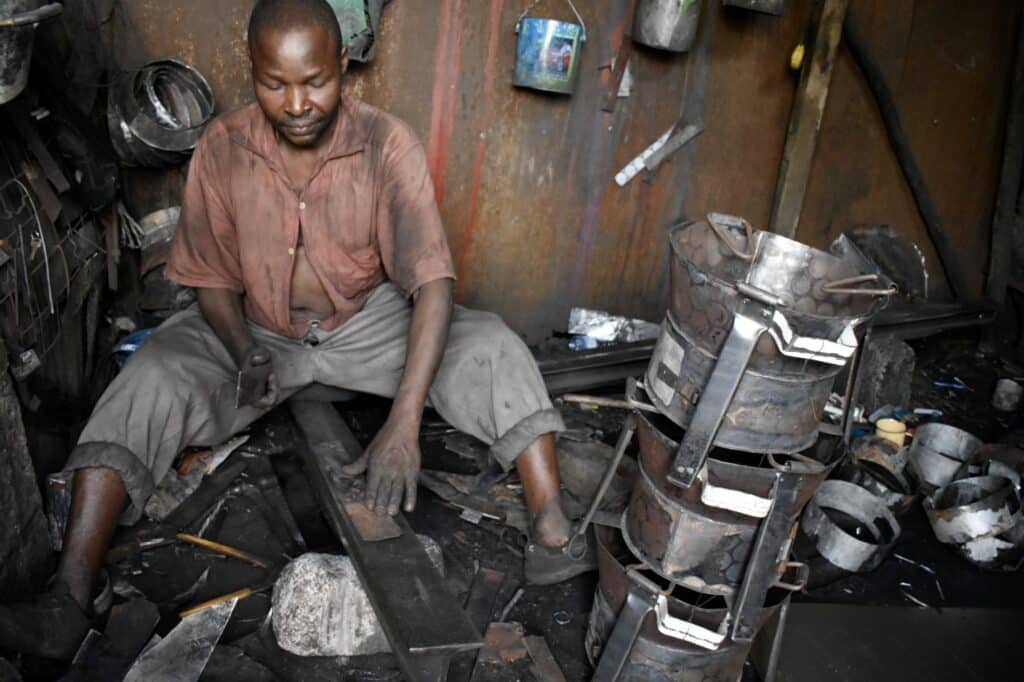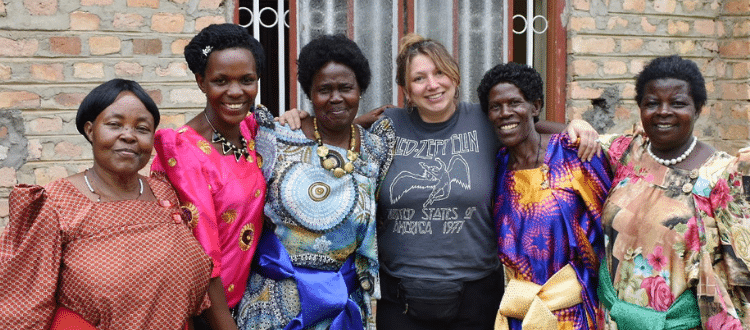MYTH: Microfinance alone is a fool-proof way to eradicate poverty.
FACT: While we certainly see microfinancing the Microfinancing Partners in Africa way as an effective strategy in lifting people up from extreme poverty, microfinance works best in the context of a supportive, holistic approach that includes training, coaching, ongoing support and problem solving.
Microfinancing looks different for each of our projects – while some are animal based and the loan is structured around the repayment with a “living loan”, others are structured around a community of individuals working together to create products for sale. At the center of each of our projects is one thing: the opportunity for a hand up from poverty to possibility.
How do we know it works? Over the past 10+ years of partnering with grassroots microfinance organizations we’ve seen countless individuals and families able to send their children to school, have income to purchase food and household needs and have money to save for future income-generating projects.
To date, we’ve seen 97% of small business loans be repaid and cow project farmers reporting a savings of $50+ dollars in the bank all thanks to the income that is generated from their microfinance project.
– Toni Temporiti, Microfinancing Partners in Africa Founder
MYTH: Without microfinancing people living in poverty would have no access to credit.
FACT: Credit can be available but at predatory terms. People struggling on less than $1.25 dollars per day do face challenges when they seek financial services. Traditional loans require monetary collateral. Banks require patrons to wear shoes to enter. Loan sharks are happy to provide quick loans, but at predatory and shifting terms. Microfinancing the Microfinancing Partners in Africa way offers viable, fair and empowering access to credit and financial services.
MYTH: No real collateral is needed for the startup and receiving of a loan.
FACT: Each and every one of our loan recipients have been required to save a certain amount of money or have put in hours of “sweat equity” to count as proof of repayment ability. For example, cow farmers need to prepare their farms and build a zero-grazing shed. Groups of women undergo training to receive a pay-it-forward loan of a water filter-and-bucket system.
MYTH: Microfinance only empowers women.
FACT: Microfinancing the Microfinancing Partners in Africa way is focused on those living in extreme poverty (less than $1.25 a day). The sad fact is that most people in this situation are women. Microfinance does provide extremely powerful ways for women whether single, married or widowed to create a sustainable income. However, Microfinancing the Microfinancing Partners in Africa way is open to all regardless of sex, tribe or religion and we have many men involved in our projects working and leading their families out of extreme poverty.

MYTH: The poor only need access to credit to pull themselves out of poverty.
FACT: While the actual lending of money is a key step to ending poverty, more is needed to realize long-term sustainability. With our projects in East Africa, lending occurs through borrowing groups. Groups meet regularly and encourage repayments and receive training and support from their umbrella grassroots organizations. Microfinance is a lot more than credit; it involved a high level of support in combination with accountability.
MYTH: The repayment terms are unreachable for borrowers
FACT: Microfinancing the Microfinancing Partners in Africa way provides relatively low- interest loans and with reasonable, fair and fixed terms for repayment. Groups set their own terms. While they may seem high from the point of view of what typical banks might offer in the US, it is reasonable to the people in the group. Whether the repayment is monitory or as a “living loan” with the passing on of a calf or piglet, the loans are repaid and at a 97% rate!

MYTH: Microfinancing is a deathtrap for the poor.
FACT: Microfinance done well is a benefit to those struggling in poverty. Microfinance for the profit of outside investors or microfinance done poorly, there is potential to limit the support infrastructure that is critical to success especially for those in more severe poverty. Microfinancing Partners in Africa is proud of our partner programs; they are examples of “best practices” of microfinancing. Rather than being a trap for those in poverty, our partners, by implementing positive microlending practices, are lifting people up in their abilities to provide for themselves and their children.

